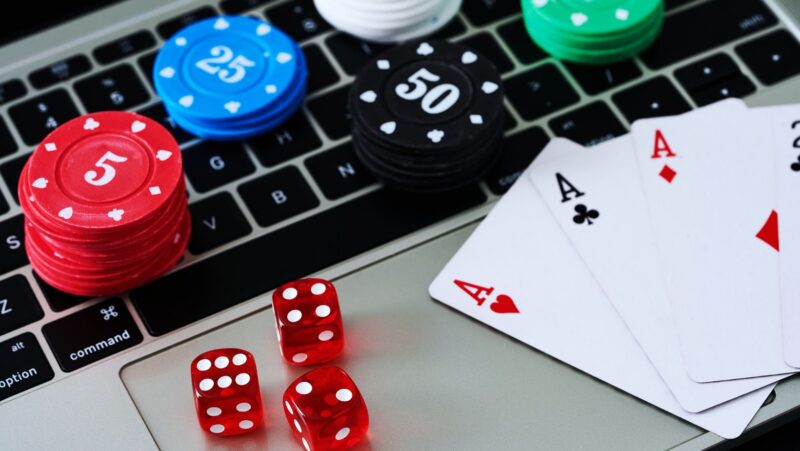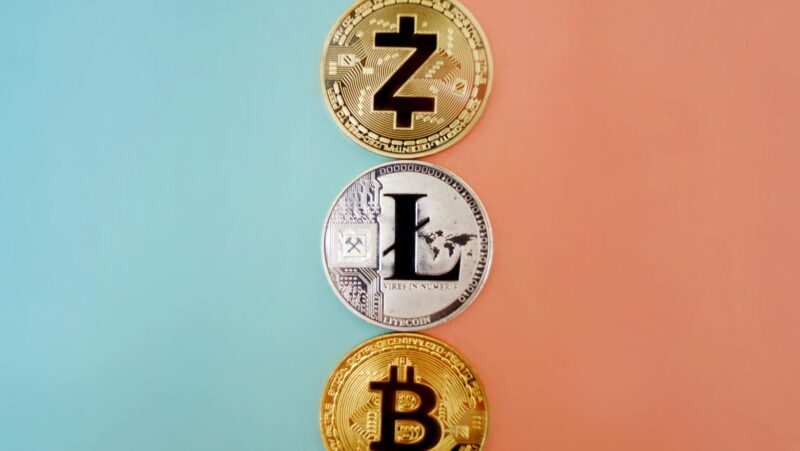
Your phone can overheat for a number of reasons, ranging from software to hardware. The most common symptoms are that your battery life drains faster than usual or you have the “unexpected shutdown” error notification on your device. If this pastel-colored icon is appearing repeatedly, it could be due to overheating and should not be ignored.
The “how to cool down a phone fast” is a question that many people ask. There are many reasons why your phone could be overheating and some easy fixes to help.
Have you noticed that your phone seems to be becoming hotter and hotter for no apparent reason? There are a multitude of reasons for an overheated phone, however the following are the most typical ones:
- It’s Too Hot Out There
- Apps that need a lot of processing power or keep the screen on
- Frequently Charging Your Phone
- A Great Deal of Data Is Being Transmitted
- Apps in the background and those that haven’t been used in a long time
- Apps that are outdated, poorly written, loaded from the side, and have been hacked
- Too much time spent on the phone
- Needs to be serviced or replaced
Each of these causes of a heated phone has a simple solution.
It’s Too Hot Out There
The most prevalent concern for consumers is the ambient temperature where they are using their gadget.
When you’re outdoors, the light and air temperature contribute to the heat generated by your phone, which is particularly noticeable during the summer. This extra heat has an impact on your device’s performance and may cause it to overheat.
If you sleep with your phone in your bed or under your pillow, you insulate it and add your body heat to the equation.
It’s simple to change the surroundings around your smartphone.
- Make sure your phone isn’t in direct sunlight or near any other heat sources.
- Do high-demand, screen-on activity like gaming, streaming, video chatting, and social networking when the weather is cooler.
- In your car, adjust the heating and air conditioning.
- Keep your gadget away from vents while the heat is on.
- Use a vent-mounted holder during cooling. I just purchased a well-designed magnetic holder.
- Get rid of the case. This is easier said than done, particularly if you’re prone to mishaps.
Neil deGrasse Tyson discusses why he doesn’t wear a phone cover on the Joe Rogan Experience. Here’s a clip from the video.
It’s likely that you just saw this video on your smartphone. If that’s the case, the time your screen was on and the processing power necessary to produce or draw the video on the screen caused your phone to become a bit warm.
Apps with a lot of screen time and processing requirements
Some applications will keep your phone’s display on for an extended period of time.
Some applications put greater strain on your phone’s CPU than others.
Some applications are capable of doing both.
Tasks That Require the Use of a Computer
The display on your smartphone is both a power drainer and a heat generator. Heat is produced by using applications and completing chores that keep it lighted.
Aaron Carroll and Gernot Heiser of the University of New South Wales recorded the power consumption of different components in ordinary smartphone workloads in their article, Analysis of Power Consumption in a Smartphone.
The simplest option is to put your phone in a suspended mode (sleep; display off) or perhaps turn it off completely till it cools down.
Lowering the screen brightness, on the other hand, will make the device less heated. As you boost the brightness, you’ll notice that the power usage skyrockets.
Display that is up to date At lower brightness levels or when showing dark colors, OLED screens are very efficient. However, this is just a small component of what causes a phone to heat up.
Tasks that need a lot of processing
A multitude of processors in your smartphone work together to make it a terrific multitasking tool.
While basic actions like as texting and emailing need less processing, some applications necessitate the usage of a high-end CPU, which uses more power. This level of performance comes at the expense of excessive heat production, which raises the temperature of the phone.
The tasks that need the greatest processing power on a mobile phone are listed below.
- Gaming — High-end graphics rendering requires a lot of intense processing, which drains your phone’s battery and generates heat, as well as keeping the screen on and active.
- Video Calling – Video talking over lengthy periods of time, like gaming, causes the phone to overheat due to the high processing demands and data uploading and downloading.
- Streaming Video — Similar to video calling, watching or streaming video or live streaming to the internet is a high-demand operation.
- Scrolling Social Media – From basic text to audio, video, and interactive media, social media has evolved. These new feed pieces are huge, necessitating more data transfer and processing on the fly.
To tackle these heat-producing processes, there are a few simple fixes:
- Simple puzzles or other low-processing-demand recreational games might be substituted.
- Over the cellular network, convert your video chat call to an audio-only call (though this is less private than using an encrypted messenger app)
- To save money on your mobile data plan, wait to stream video until you’re in a cooler area with WiFi.
- Fight the FOMO impulse by deferring your social media browsing until later.
Take notice of the power usage for a basic cellular audio call in the aforementioned Carroll and Heiser research. Smartphones, at the very least, perform their principal job with little power consumption and heat emission.
Frequently Charging Your Phone
People often believe that charging their phone more often would extend its battery life, however this is not the case. Overcharging your battery might shorten its life by generating too much heat.
I wrote about how to extend the life of your smartphone battery and found the best manufacturers here.
If you want to safeguard your battery as much as possible, avoid charging it when it’s hot or in a heated environment. In fact, once the power level reaches 80 percent, turn off the charger to limit the amount of time it’s plugged in and creating heat.
It is preferable to charge many times during the day. During charging cycles, the heat generated is permitted to evaporate. People hate running out of battery power, but it’s worth it to keep your smartphone cool. Most of us are within walking distance of a charging station:
- supply of electricity
- Charger for vehicles
- external battery backup
- a pc with a USB port that is not plugged in
Aim to maintain your battery between 80 and 20% charged, then charge it to roughly 40% and remove it from the charger when it reaches 80 percent.
There are even applications that allow you to customize your alerts. I use BatteryBot Pro (F-Droid | Google Play), which can track your phone’s battery life and temperature.
If you’re not near a power source, switch off everything that isn’t absolutely required. WIFI, Bluetooth, and GPS are all included. These services may use a lot of battery power and generate heat.
A Great Deal of Data Is Being Transmitted
Another source of heat, although to a smaller amount, is data transmission and reception. The three major radios on current smartphones are cellular, WiFi, and Bluetooth. While their power consumption isn’t as high, when combined, they may lead to increased smartphone temperatures.
The University of Zagreb’s Goran Kalic, Iva Bojic, and Mario Kusek compared the battery consumption of these three communication radios. The researchers quantified and compared the links in their article, Energy Consumption in Android Phones while Using Wireless Communication Technologies.
While Bluetooth consumes less power, the three technologies often function together, resulting in increased heat output.
The interior temperature of current mobile phones is influenced by background location services provided by a GPS radio and newer, quicker cellular radios for 4G and 5G.
If your phone is becoming hot, here are a few things to think about:
- Turn off your WIFI – When you’re not using it, disconnect from it. To automate this, I use WiFi Automatic (F-Droid | Google Play).
- Turn off Bluetooth — Unless you use wireless headphones, earphones, or smartwatches often, your Bluetooth connection is always looking for recognized devices. When the final accessory disconnects, I use Greentooth (F-Droid | Google Play) to turn off Bluetooth.
- Turn on Airplane mode — Turn off all radio broadcasts if you don’t need to be online or receive phone calls.
This not only keeps your phone cool, but it also protects your privacy by blocking WiFi and Bluetooth beacon monitoring.
The fact that these radios are available online is not the major issue. When they’re in use, they utilize a lot of energy and produce a lot of heat. While they’re operating in the background, apps might send unwanted data across WiFi, LTE, and Bluetooth.
Apps in the background and those that haven’t been used in a long time
Many applications operate in the background of mobile devices in addition to system operations.
This may happen with applications that share your location, social networking apps, or the most recent shopping or travel offer apps. Even when the program is not in use, these background functions waste battery by requiring CPU cycles and, in certain cases, audio/visual output.
Background applications are usually limited in how much processing and data transfer they are permitted by mobile operating systems. Both an Android phone and an iOS device allow users to limit how much background activity an app is allowed via options such as “Battery Optimization.”
Even with restrictions, certain programs, like as streaming or A/V playback, have greater flexibility. Excess heat is produced as a result of multitasking.
The simplest strategy to get rid of unnecessary background services is to reduce the amount of programs you have installed. I propose going through your app list and asking yourself the following question:
Is it really worth 5% of my battery today?
I’m aware that this is pretty Marie Kondo-esque. However, if you don’t use an app at least once a week, you’ll gain weight.
- a more powerful battery
- Your data plan is worthless.
- having more storage space available
- Most essential, your phone should not overheat.
If you require an app later, remember that you can always reinstall it.
Apps that are outdated, poorly written, loaded from the side, and have been hacked
Apps aren’t all made equal.
Some smartphone applications are poorly developed or have the potential to become outdated. This poor coding or extra processing depletes your battery and may cause your phone to overheat.
As indicated in the last section, being a digital minimalist in terms of app count might lessen the likelihood of rogue programs causing issues. Make sure the rest of your applications, as well as your Android and iOS operating systems, are up to current.
Only install programs from approved and well-known app shops if you use them often. The safest option is to download software from the Google Play Store or the Apple App Store. F-Droid and Aurora marketplaces have been thoroughly analyzed for the tech-savvy and privacy-conscious.
Please, please, please, please, please, please, please, please, please, please
Please do not download an app’s premium or paid version from dubious download sites. These applications have a greater chance of being hacked. Installing these rogue versions on your smartphone, which contains sensitive and private data, is a certain way to have your data stolen. In addition to jeopardizing your digital existence, these stolen applications aren’t updated via an app store, which might cause your phone to overheat.
Finding methods to install a cryptojacker program on mobile devices, even from legitimate app stores, is a recurring issue. The purpose of these applications is to mine bitcoin without the user’s awareness.
Too much time spent on the phone
Smartphones have evolved into a game-changing piece of technology that will be used by 7.5 billion people globally by 2026. However, there are certain drawbacks to this vital equipment.
Many individuals use their electronic gadgets in excess of what is considered “healthy.” You’re badly harming sleep, focus, posture, and maybe a number of other yet-to-be-identified elements of your health while draining your battery and heating your phone.
Some simple fixes to excessive phone usage include:
- Taking a break – Take a break from using your smartphone, and consider completing a digital detox as well.
- Take a little stroll, go outdoors for some fresh air, or engage in a discussion with others around you to live in the now.
Side Note: Unless they have access to technologies such as mobile phones, tablets, or video games, children become bored rapidly. My spouse and I have started detoxifying our children, teaching them how to develop new real-world skills, interests, and creative outlets.
Needs to be serviced or replaced
While most mobile phone hardware is built to withstand the rigors of regular usage, an overheated phone may indicate that it needs to be serviced.
The following are some of the most typical causes of a heated phone:
- Dropping your phone on the ground or into water is not a good idea.
- Hardware components from the past that aren’t working properly
- Exposure to intense heat, cold, or variable conditions on a regular basis
- Debris invading the components of the gadget (dirt in your phone)
The best approach is to take your phone to a repair shop and have it inspected by an expert technician for internal physical damage. Notify them of any recent damage or heat source exposure.
Let’s say the technician can’t identify any hardware issues, but the gadget still generates a lot of heat. If that’s the case, it’s probably time for an update. Components that are becoming older are unable to keep up with today’s programs and user multitasking.
The typical smartphone has a three-year lifespan. If your budget permits, replace your phone as soon as possible.
Watch This Video-
“How to stop my phone from overheating” is a question that many people have asked. There are many reasons for the phone to get hot, but there is an easy fix. Reference: how to stop my phone from overheating.
Frequently Asked Questions
How do I stop my phone from overheating so fast?
A: To stop your phone from overheating, you can power off the device and put it on a surface thats not flat. If this is not an option (for example if you are in a car), try to keep the volume low or turn down the brightness of your screen. The less things running at once, the better!
How can I cool down my phone instantly?
A: To cool down your phone you can use iced water and a fan.
Can a bad battery cause a phone to overheat?
A: No, a bad battery will not cause your phone to overheat. The most likely reason for overheating is that the device has been running with an old or insufficient charge which causes its internal components to get too hot and reach their thermal limit.
Related Tags
- why is my phone hot and losing battery
- why is my phone getting so hot
- why is my phone hot when charging
- what to do if your phone overheats and won’t turn on
- is it bad if your phone gets hot



















